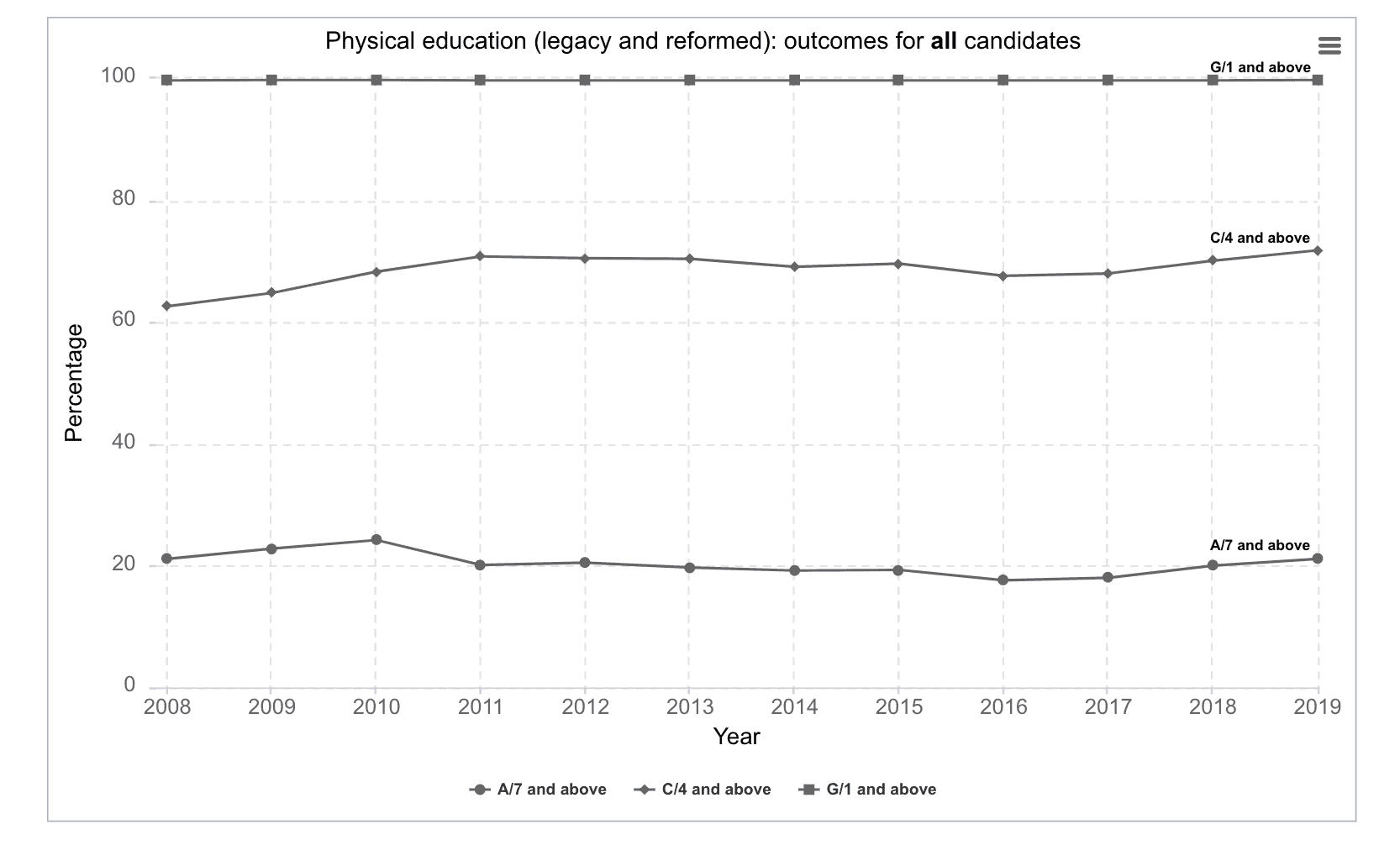
Key points
- The majority of results were awarded for reformed GCSEs, with almost all students in England now only receiving numerical grades.
- Reformed GCSEs were awarded for the first time in 25 more subjects this summer, bringing the total number of reformed subjects to 48. Our focus has been to ensure that standards have been maintained for all qualifications awarded this summer.
- Overall GCSE outcomes at grade 4/C in England have remained stable in recent years and this trend has continued this year (67.1% in 2019 compared with 66.6% in 2018).
- The variability in results at centre level is slightly less than in previous years. Even when there are no changes to qualifications, individual schools and colleges will see variation in their year-on-year results; this is normal.
Overall GCSE outcomes
Overall, GCSE outcomes have remained stable in recent years, with only small changes in cumulative percentage outcomes at grade 4/C and above. This is illustrated in the chart below, that shows the overall GCSE outcomes for 16-year-olds in England at grade 4/C and above between 2015 and 2019.

Interactive Analytics – GCSE Results
The report also signposts a range of analytical tools that are really sophisticated in exploring the data.
I strongly advise teachers with responsibility for physical education or examination subjects to take a look and explore the data using these tools.
Physical Education Key Points
Using the interactive analytics there are two key takeaways for physical education from my perspective.
Strong Physical Education Performance
Physical education is a consistently strong performer with outcomes of 100% of students achieving G/1 or above, and in 2019 circa 76% achieving a C/4 and above and 21% achieving a A/7 and above. With results as strong as these you would think that physical education would be championed as a highly valuable subject within schools (not to mention the wider health and wellbeing benefits).

However, this is not the case with Research from the Youth Sport Trust showing that 38% of English secondary schools have cut timetabled PE for 14- to 16-year-olds. One of the main reasons for this is the increased pressure to produce exam results. Much of the time pupils would usually spend in PE lessons is now spent receiving extra tutoring on topics other than PE. Despite this reduced time in core physical education, examination PE has continued to produce and improve upon its outcomes. But this is a worrying trend, so too is the dramatic decline in PE subject uptake at GCSE.
Physical Education GCSE Number of Candidates
Since 2016 physical education GCSE uptake by pupil has steadily declined. And over a ten year period between 2008 and 2019 physical education candidate numbers have plummeted from over 130K to just over 75K. These are worrying statistics and more needs to be done to understand the reason for the decline and moreover make steps to reverse the current trend.

Closing Thoughts
Overall the report highlights positive outcomes for GCSE results marking the successful navigation of GCSE reforms with little significant impact on overall performance.
I would argue that the picture for physical education is more worrying because despite returning secure and strong GCSE outcomes for pupils, physical education GCSE uptake continues to decline and its value within schools continues to be considered as a ‘relative value’ in comparison to other core subjects.
More needs to be done to elevate the value of physical education within schools and seemingly with pupils, especially prior to them choosing their GCSE subjects and throughout their education more widely.
For the full GCSE results report please visit this link


Responses